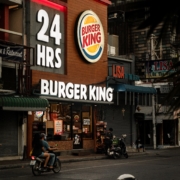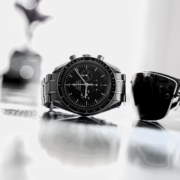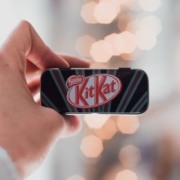Building Immersive Brand Experiences: American Girl and RH Restaurants
Prior to the pandemic, Starbucks’ founder, Howard Schultz, stated that the way forward for brands is making your branded space an “experiential destination.” At that time,
Starbucks’ CEO, Kevin Johnson said, “To survive, merchants need to create unique and immersive in-store experiences.” Covid-19 changed things for Starbucks as the company post-pandemic focuses more on drive thru and digital rather than the original experiential third place.
Brands focus on making their experiences come to life in many different ways. This is because a favorable experience with, for example, an iPhone and/or an Apple Watch and/or earbuds increases the probability the same customer might buy an Apple iPad, Mac Air or Mac. With a stable of desirable offerings, Apple continues to build an over-arching power brand by connecting with younger cohorts. In 2018, financial news magazine, Barron’s commented, “Getting more people into the Apple network early can be extremely valuable, especially if they sign up for services that make them unlikely to switch to other phones. And, finding that interest in the Apple Watch is also growing would only help.” Samsung hopes that positive encounters with Galaxy mobile phones will persuade customers to purchase a washer and dryer or other appliance from Samsung when the time comes.
Extended brands that offer multiple product and service experiences strengthen the customer’s commitment and conviction in the brand promise. Disney created spaces where you can meet the animated and other movie “friends” through rides, hotels and cruises.
One of the ways that brands have become immersive is through food. Brands are using restaurants to make the brand encounter a far deeper three-dimensional sensory involvement. Think surround sound for your psyche, soul and stomach. Restaurants make brands immersive without the metaverse.
American Girl, the doll company, and RH, the upscale furniture lifestyle brand both have in-store restaurants that extend and enhance the brand for the customer.
The website for American Girl Stores states, “Ready to make memories together you’ll always treasure? Discover all the experiences our stores offer for a day full of fun!” In addition to in-store parties, a “Dolled Up” salon for the dolls, a doll hospital, activities and hotel packages, there is the restaurant. “Enjoy selections that appeal to girls and grown-ups alike – plus we offer special seats just for doll friends.”
One blog told the story of an American Girls Store dining experience as follows:
“… hordes of customers (usually moms and daughters, but not always) lining up to have afternoon tea with their dolls. The dolls get their own scaled-down cups and saucers so they can sip invisible tea while the humans polish off petite sandwiches and glasses of American Girl signature pink lemonade.
“(The website states that) possessing your own American Girl is not a prerequisite for the dining experience: “And don’t worry if your girl forgot her doll – we always have extra dolls available to dine with you.”
RH, formerly Restoration Hardware, has taken the in-store restaurant to an even higher level. As described in The New York Times recently, RH uses its restaurants to provide surroundings focused on RH’s special décor styles and offerings. The restaurants are décor showrooms with a menu. Unlike IKEA, where the spare cafeteria may feature some available lighting or a storage unit, RH has made its aesthetics palpable for its high-end customers. Although the food is quite elegant, albeit expensive, most guests indicate that the beautiful, pleasing surroundings is the draw.
The idea of using a restaurant to immerse customers in the brand, enhancing the brand experience, bringing the brand’s promise to life, is what intrigues Crate and Barrel. In the very tony Oakbrook, IL., mall, Crate and Barrel just opened its first in-store restaurant, Table and Crate.
Privately owned, UK department store, Fenwick’s, also uses the in-store restaurant as a customer draw. Fenwick’s has two different in-store branded restaurants, Fuego and Mason & Rye.
Brands use stores-within-stores to generate traffic. Many of these stores-within-stores are other brands such as Toys R’ Us in Macy’s and Sephora in Kohl’s. Having other brands enhances both brands. Both brands benefit. For example, Macy’s gains the ability to offer customers quality, fun, year-round toy shopping. Toys R’ Us gains actual brick and mortar facilities, a reliable stream of shoppers and the ability to reinforce its brand with old and new customers.
The in-store restaurants also generate traffic. But, the restaurants do much more. In-store restaurants allow a brand to enmesh a customer in the brand’s promise, enhancing the way in which the customer perceives the brand.
The focus on the total brand experience as a physically and emotionally “immersive” destination is not a new concept but a concept that has new traction as we navigate a virtual, digital environment. In 1998, B. Joseph Pine and James H. Gilmore wrote a pivotal, highly influential article for Harvard Business Review titled, “Welcome to the Experience Economy.” The authors argued that experiences are distinctly different from products and services. Increasingly businesses are “explicitly designing and promoting” engaging experiences, and charging for these experiences. An experience happens when a brand “uses services as the stage and goods as props… creating a memorable event.”
In a marketing environment that is weighing the benefits of an artificial immersive world of the metaverse, many brands are choosing to immerse customers in the real world of tastes, smells, feel and food.










